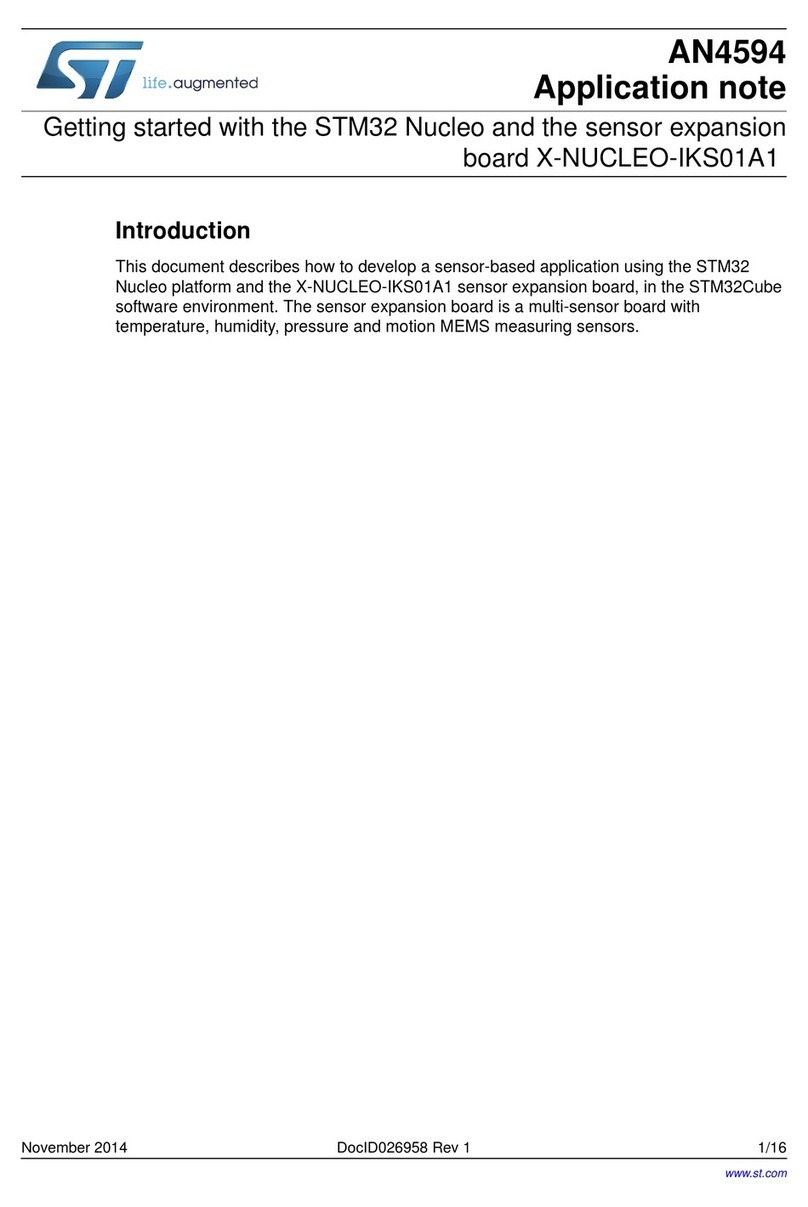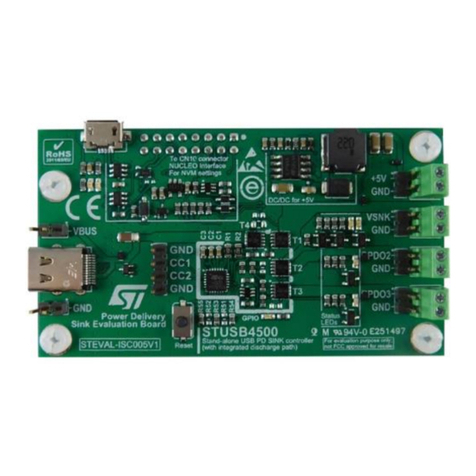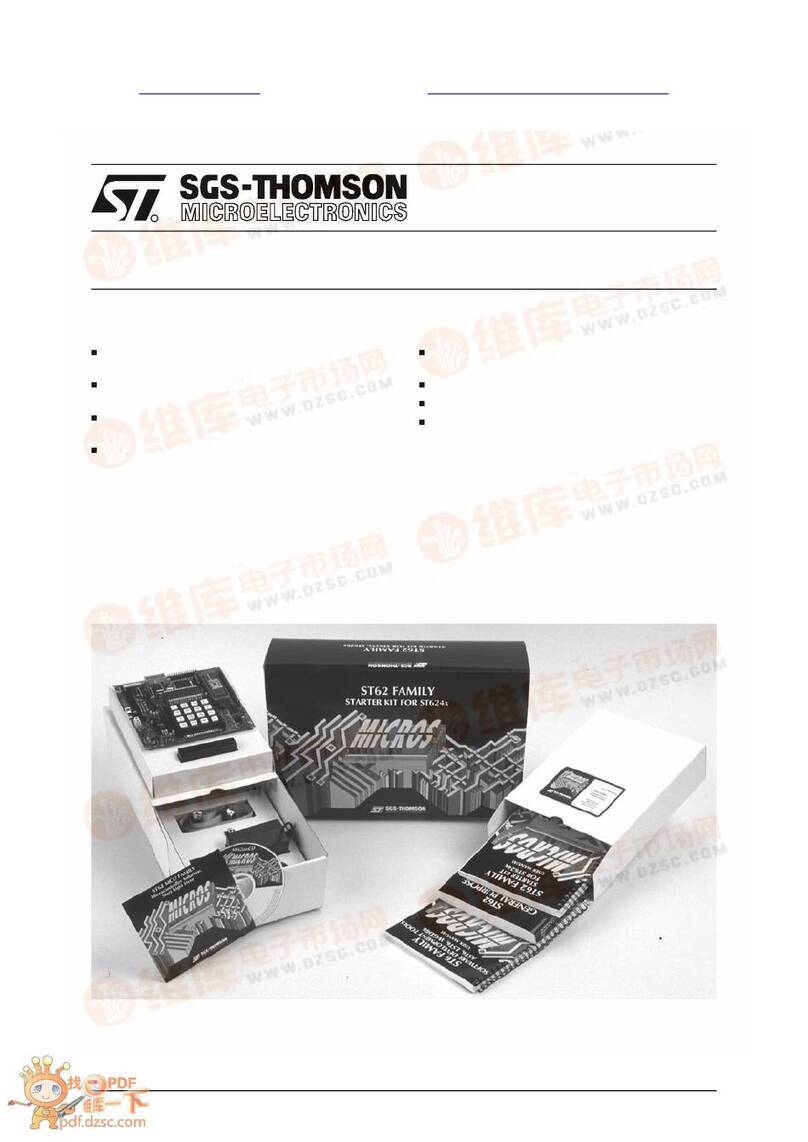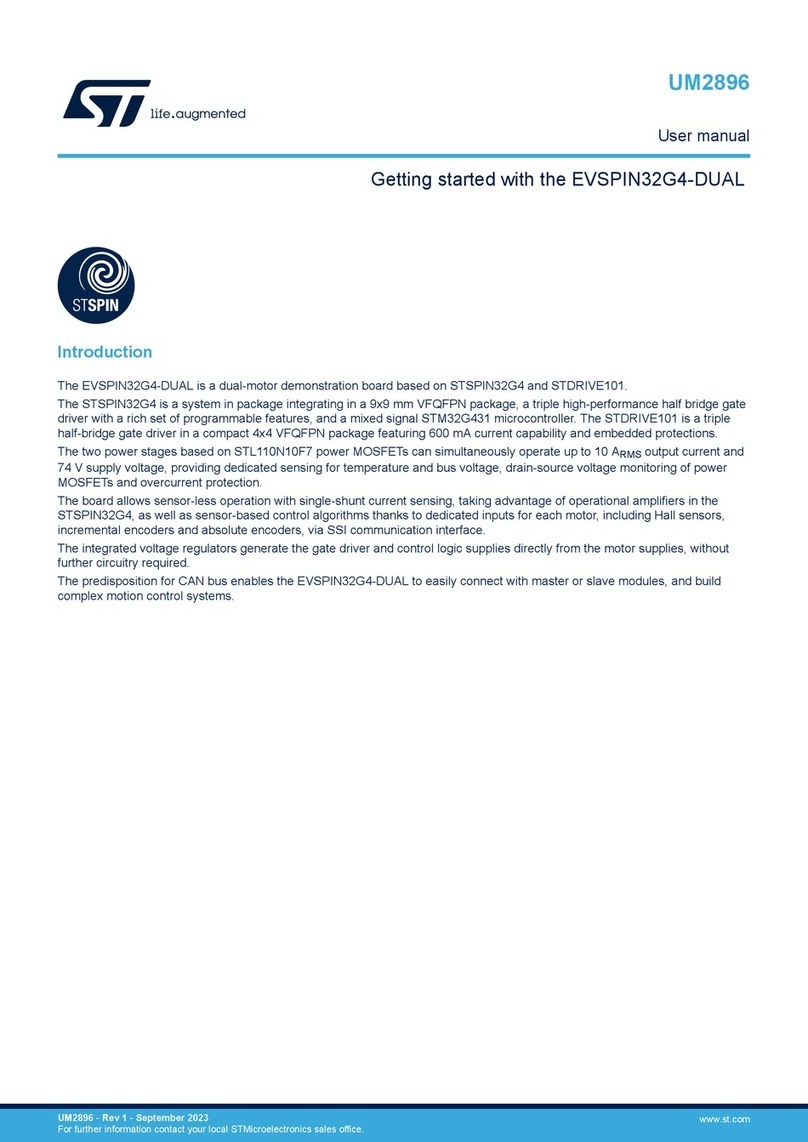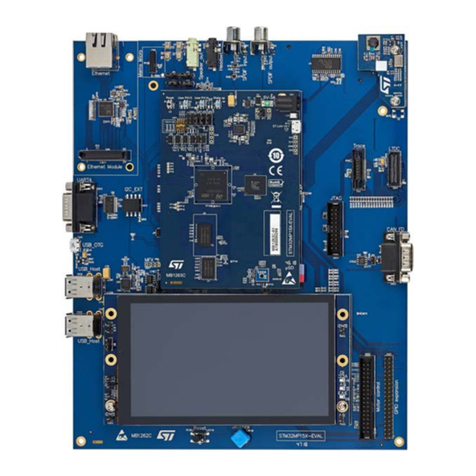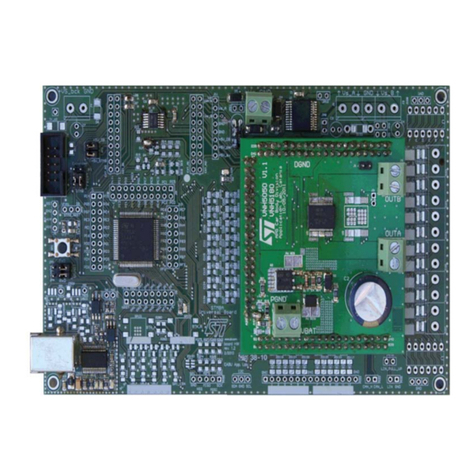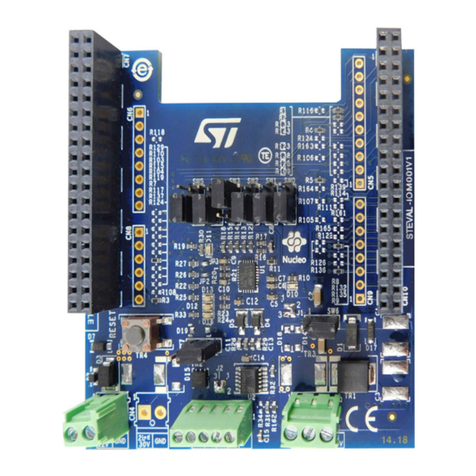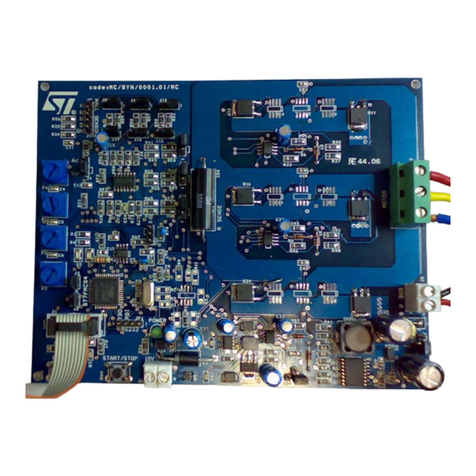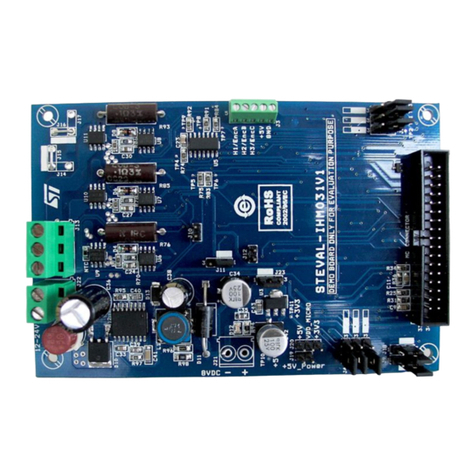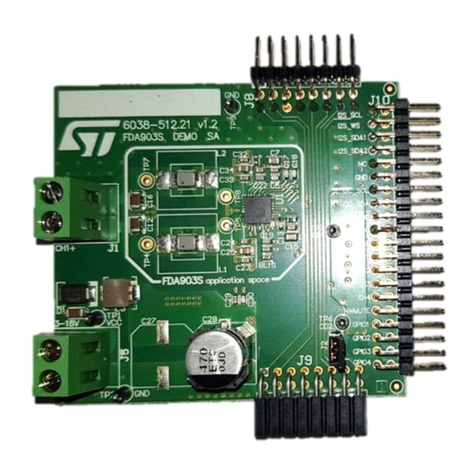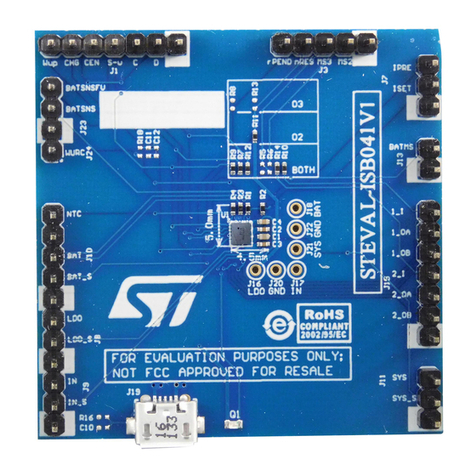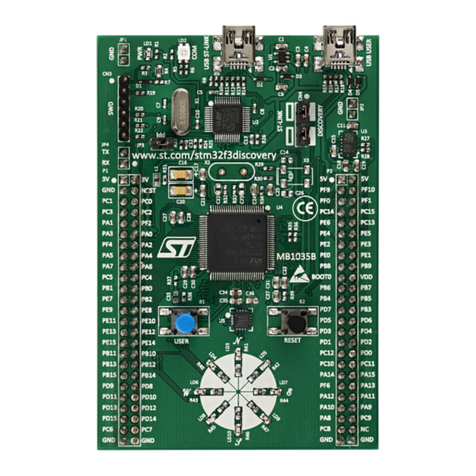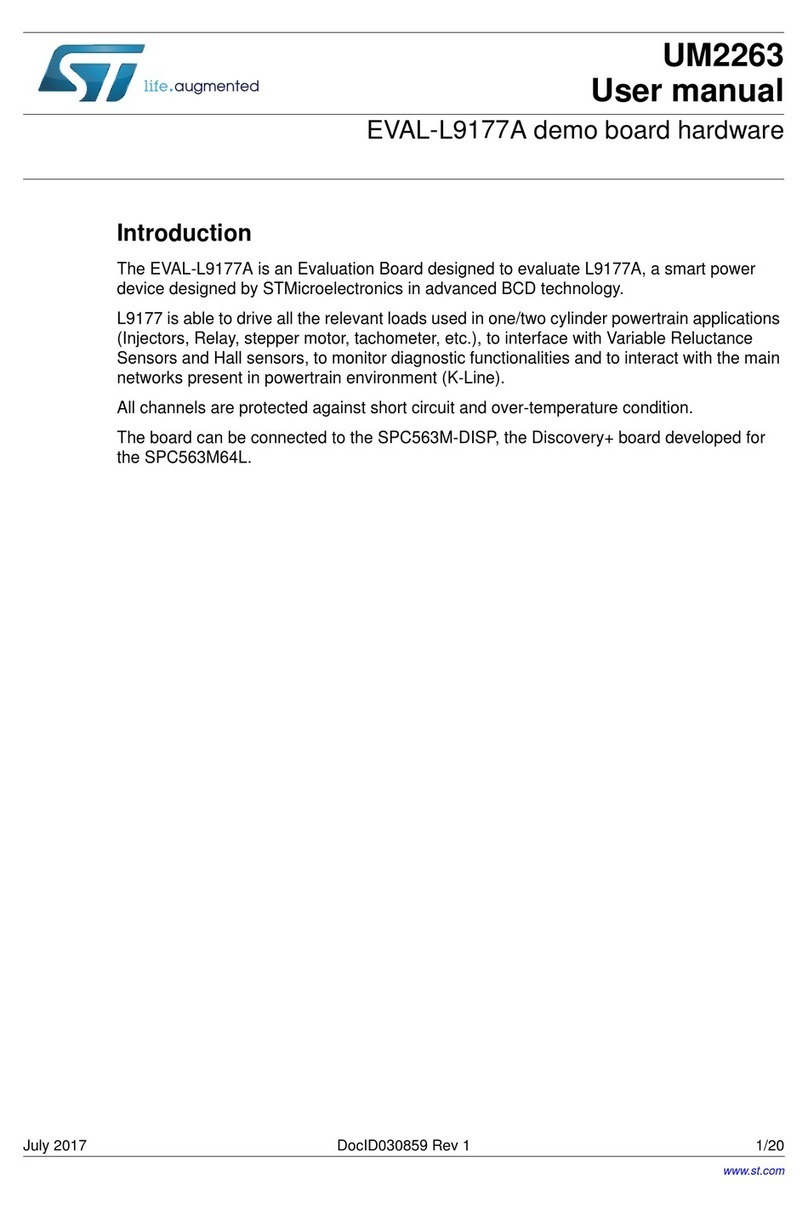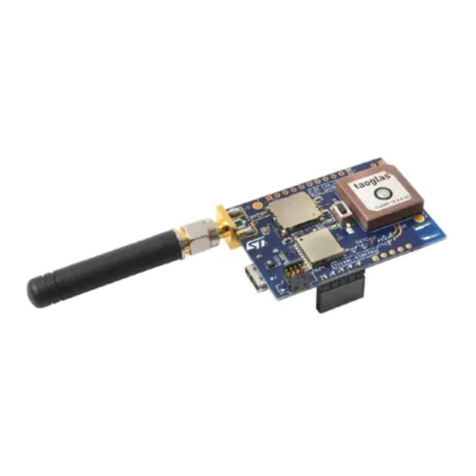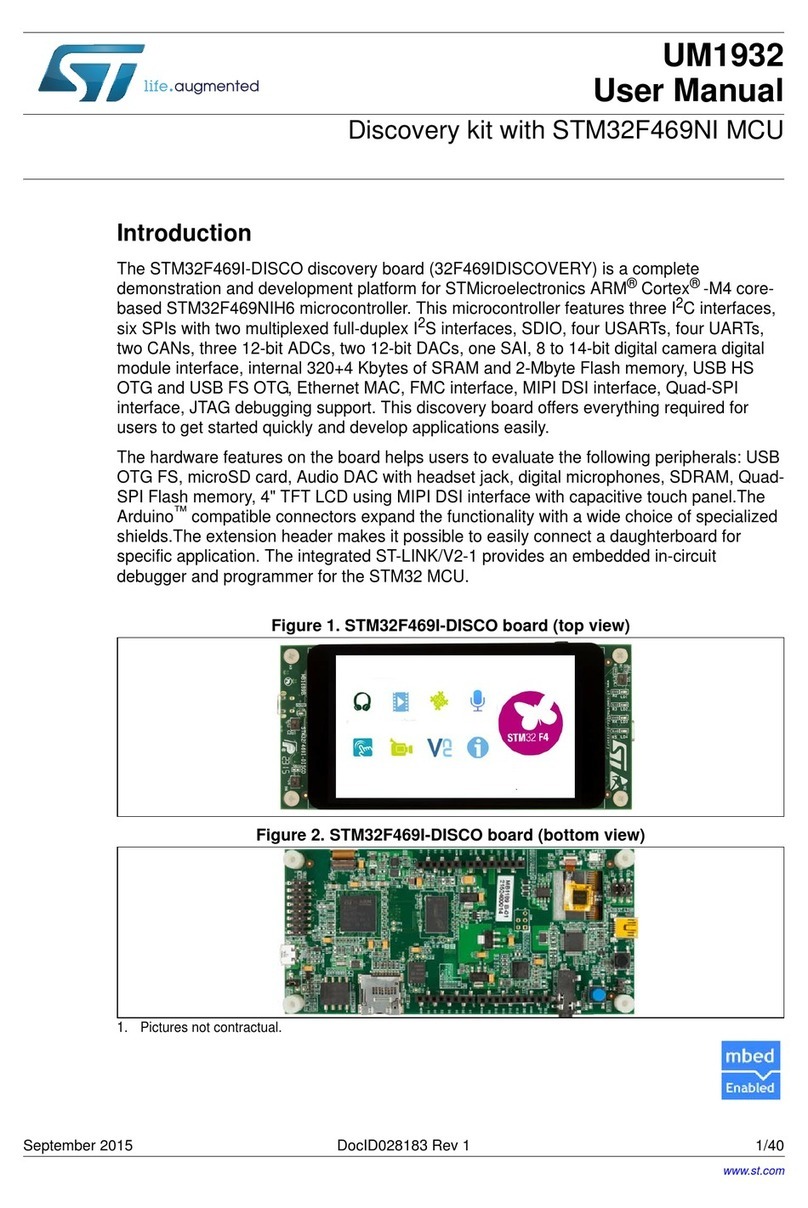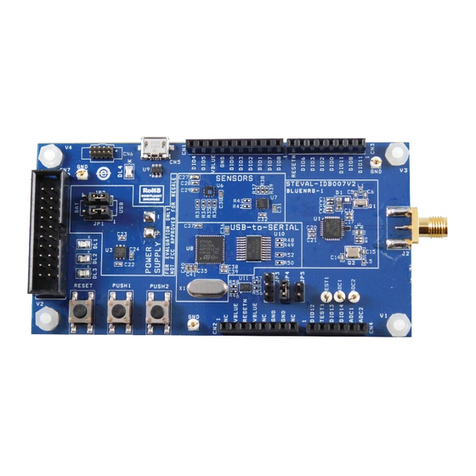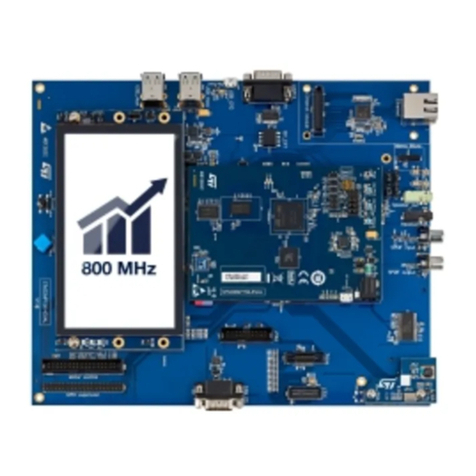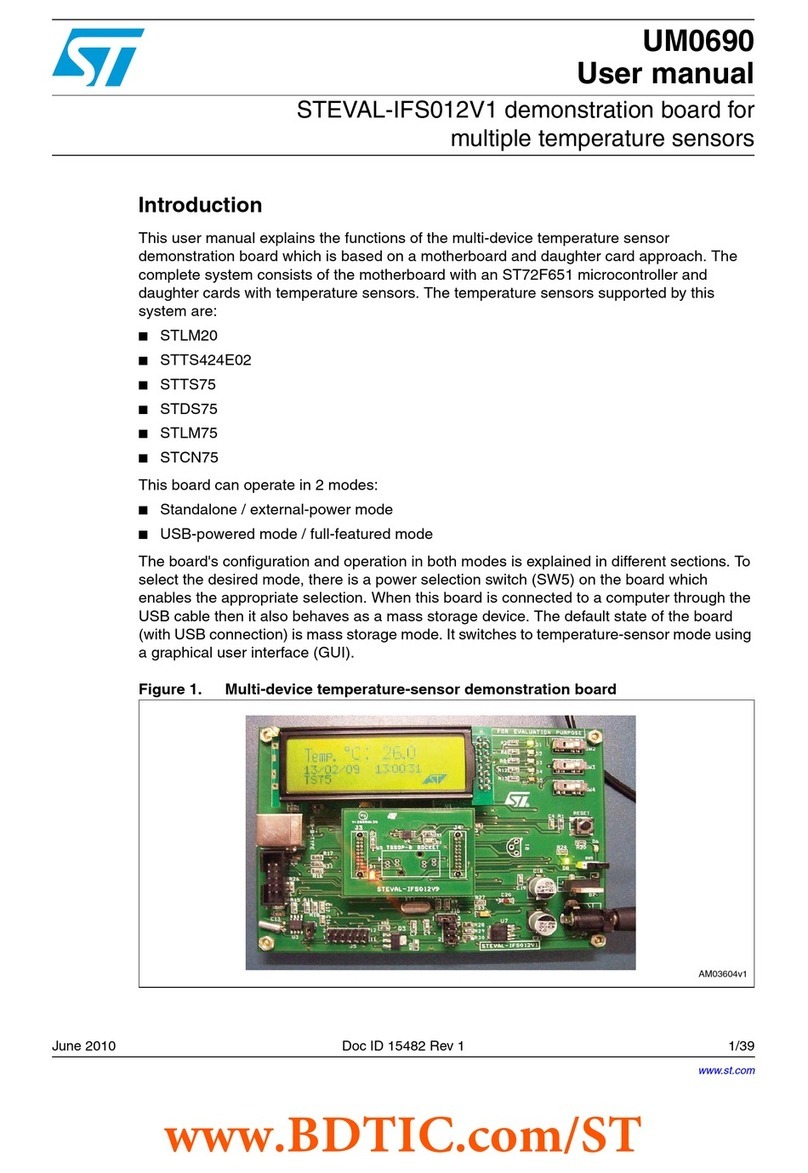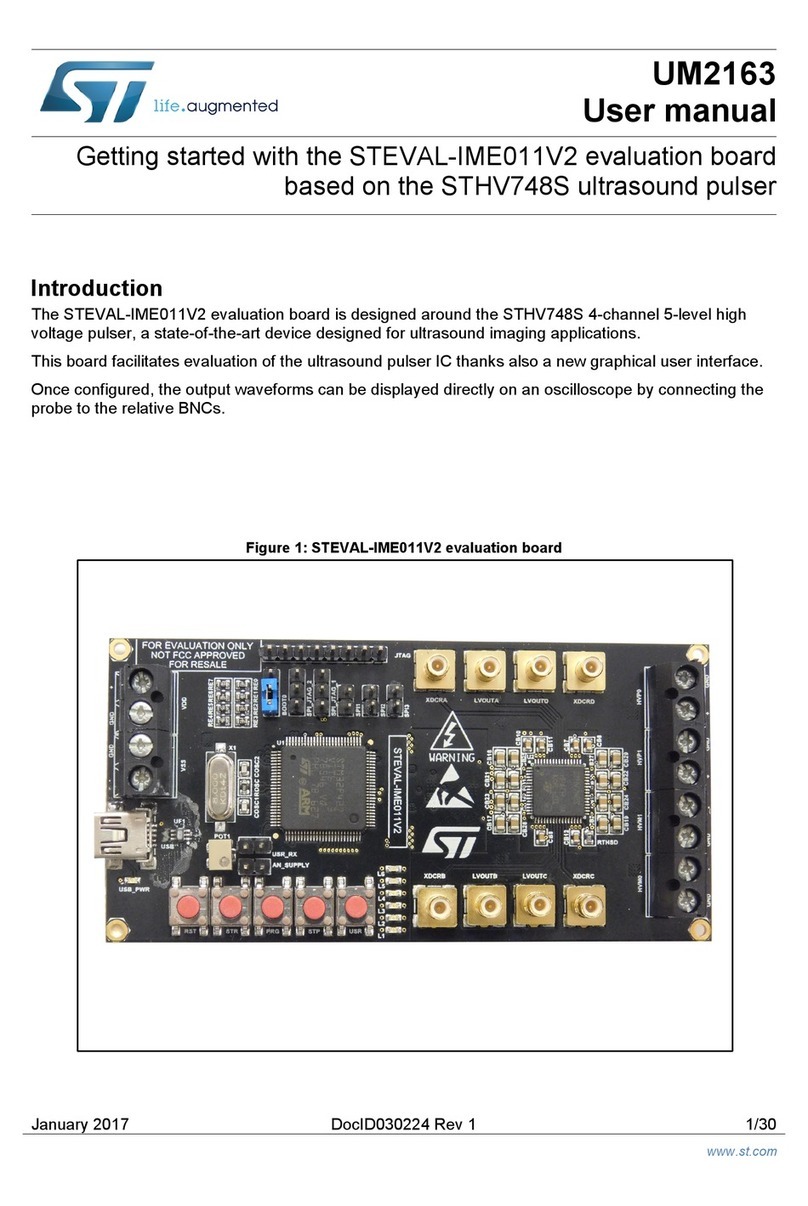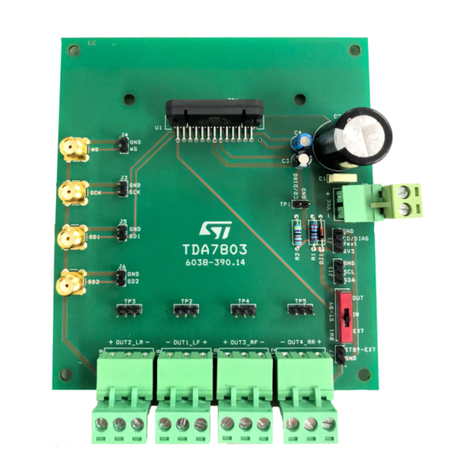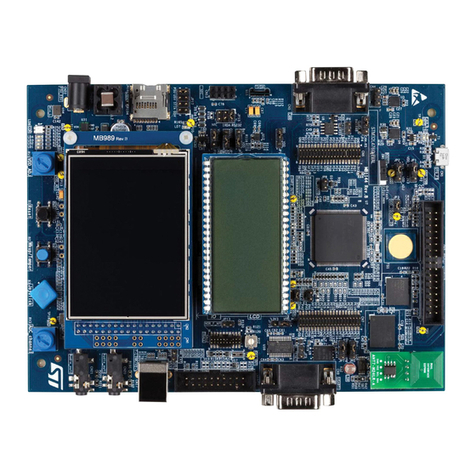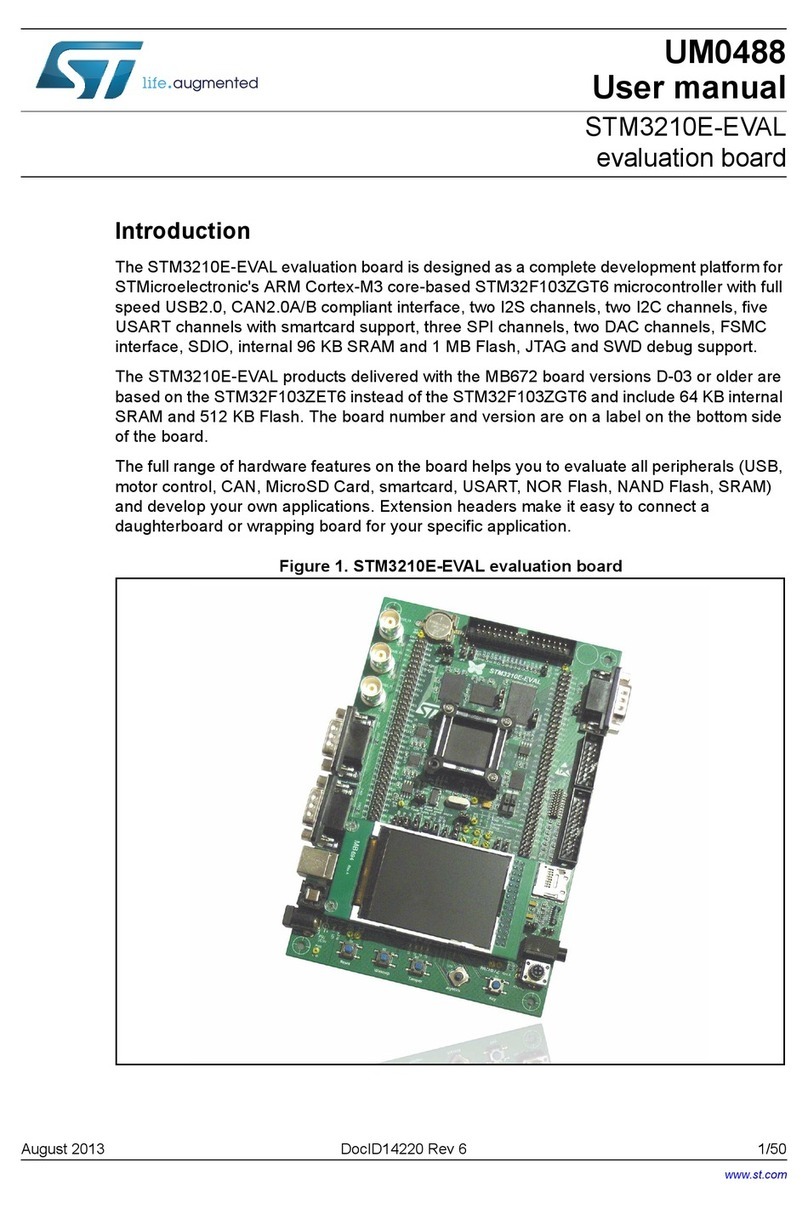
Introduction
The STM32G0C1E-EV Evaluation board is a high-end development platform for the STM32G0C1VET6 microcontroller
operating at up to 64 MHz frequency with internal 512-Kbyte Flash memory, 144-Kbyte RAM, USB 2.0 FS device and host,
two CAN FDs, USB Type-C®, and Power Delivery controller interfaces (UCPD) compliant with USB Type-C® r1.2 and USB
PD specification r3.0, three I2Cs, three SPIs, six USARTs, two low-power UARTs, one 12-bit ADC, two 12-bit DACs, three
general-purpose comparators, seven general-purpose timers, two low-power timers, HDMI CEC, and SWD debugging support.
The full range of hardware features on the STM32G0C1E-EV Evaluation board includes the mother board, the legacy peripheral
daughterboard, and the USB-C® and Power Delivery daughterboard, which help to develop applications, and evaluate all
peripherals, such as USB Type-C® connector with USB PD, motor control connector, CAN FD, USB 2.0 FS, RS-232, RS-485,
audio DAC, microphone ADC, TFT LCD, IrDA, IR LED, IR receiver, LDR, microSD™ card, CEC on two HDMI connectors,
Smartcard slot, RF EEPROM, and temperature sensor.
The board integrates an ST-LINK/V2-1 as an embedded in-circuit debugger and programmer for the STM32 MCU.
The daughterboard and extension connectors provide an easy way to connect a daughterboard or wrapping board for the user's
specific application.
The USB-C® and Power Delivery daughterboard features two independent USB-C® ports controlled by STM32G0. USB-C® port
1 is a dual role power (DRP) port and can provide up to 45 W of power. USB-C® port 2 is a sink port only. Both support the USB
PD protocol and the alternate mode functionality.
Application firmware examples are provided to evaluate USB-C® technology through various use cases.
Figure 1. STM32G0C1E-EV Evaluation board with legacy
peripheral daughterboard
Figure 2. STM32G0C1E-EV Evaluation board with USB-C®
daughterboard
Pictures are not contractual.
Evaluation board with STM32G0C1VE MCU
UM2783
User manual
UM2783 - Rev 1 - December 2020
For further information contact your local STMicroelectronics sales office. www.st.com
